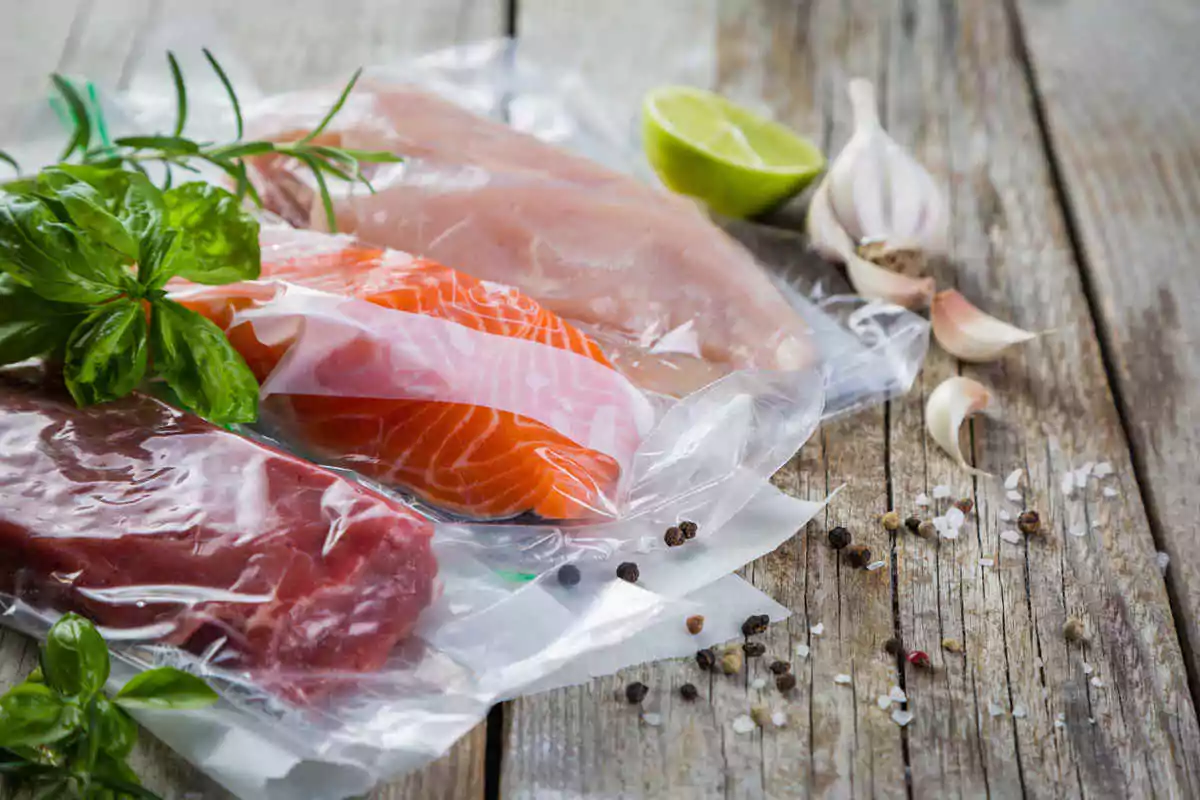Agrifood
Chocolate market: 3 approaches to sustainable and ethical cocoa
World cocoa consumption has increased by 20%. What are the socio-environmental impacts of the chocolate market and how can we respond to these issues?

Food preservation and storage is a major health and environmental issue. For good reason, a good sealing serves to maintain the edibility of food, avoiding the proliferation of bacteria, and thus preventing the risks of intoxication. It also allows to keep the taste and nutritional properties of food. All these factors make preservation a public health issue, but also a challenge when it comes to the environment: keeping food healthy and good means limiting food waste. Every year in France, 30kg of food per person is thrown away[1]. Improving conservation allows to reduce losses, and the impact on the environment which results from it. In this article, Alcimed proposes you to discover how vacuum packaging is today a lever of optimization of the foods conservation and storage.
The conservation must answer two problems:
Preservation processes aim to reduce the risks of contamination while deteriorating the qualities of the food as little as possible. Vacuum packing reconciles these two constraints with brilliance and keeps packaged foods fresh.
The principle of a vacuum sealing bag is simple: deprive the food of oxygen:
From a sanitary point of view, vacuum sealer machines are extremely reliable to keep the food fresh. It guarantees an excellent preservation of the product, up to 5 times longer than in traditional conditions. In addition, it is possible to couple vacuum sealing bags with other preservation techniques.
There is a wide variety of them, the most widespread are the treatment by heat (pasteurization, sterilization, appertization …) and by cold (deep freezing, freezing, refrigeration). Finally, vacuum packaging offers other perspectives, such as the reduction of the use of preservatives, whose impact on our health is not always well known.
With regard to the environment, reducing food waste is a global issue, as nearly one third of the food produced in the world is wasted.
Used by professionals for many years to keep their foods fresh, vacuum sealing machines were rarely present in our homes. However, the last few years have seen the development of vacuum sealers at an affordable price and that are easy to use.
Two categories of sealers dominate the market today: vacuum sealers using a single-use plastic bag, and reusable vacuum boxes (often made of glass) which are sealed with a pump.
In both cases, vacuum sealers optimize the preservation of the product, both in terms of health and taste and nutrition, ensuring less food waste.
With regard to the environment, reducing food waste is a global issue, as almost one third of the food produced in the world is wasted[2]. This waste occurs at every level of the food life cycle, including the consumer. Vacuum packaged food appears to be one of the possible solutions to this problem.
Food waste also occurs during shipping. Vacuum packaging offers a great solution to keep foods fresh during shipping.
Today, most food products are marketed worldwide, often thousands of kilometers from their place of production. These multi-modal journeys are a logistical challenge: the means of shipping must be linked together to ensure the cold chain and the preservation of the product. The maintenance of the cold chain is governed by regulations and restrictive national or continental standards. Any break in this chain implies risks of food poisoning and therefore the destruction of the concerned batches.
The use of a vacuum sealed bag could also limit losses for foods travelling long distances in containers at room temperature. Maceration due to changes in temperature and humidity during the journey is the primary cause of waste during container shipping of fruit and vegetables. In addition to facilitating shipping logistics, energy savings are possible.
In a sustainable approach, the stakes around energy are multiple. As far as food preservation is concerned, the most widespread techniques are heat treatments. These are energy consuming and vacuum sealing machines would reduce the energy cost of food preservation.
Many fruits, known as “climacteric”, are picked before they are ripe, in order to withstand several weeks of travel by boat. This is the case for mango and pineapple, among others. Ripening the fruit in an artificial way makes it lose many of its taste and nutritional qualities. For this reason, these same fruits are also picked ripe and then transported by plane. This is called “airplane mango” or “airplane pineapple”.
Vacuum packaging could provide a great solution to these shipping challenges by making it possible to harvest the ripe fruit and then ensure its safety for several weeks while it is transported by boat.
Reducing the ecological footprint of our food is one of the first levers to be part of a sustainable approach. Improving food preservation and storage, in particular through vacuum packaging, appears to be a great solution, to keep a product healthy and fresh on the one hand, and to limit the impacts on the environment on the other hand.
If vacuum sealer machines offers new perspectives, there are different approaches that are just as relevant. To date, many studies and tests have been carried out on packaging in order to limit its environmental impact. We talk about sustainable packaging or reusable packaging, with the aim of fighting against plastic waste.
Solutions to improve the impact of our food are beginning to emerge but a large field of innovation remains unexplored. Alcimed can accompany you in your projects related to these subjects. Do not hesitate to contact our team!
[1] Gaspillage alimentaire (2023). Ministères Écologie Énergie Territoires. https://www.ecologie.gouv.fr/gaspillage-alimentaire
[2] P. National Geographic (2017). https://www.nationalgeographic.fr/environnement/un-tiers-des-aliments-produits-est-perdu-ou-gaspille
About the author,
Agnes, Consultant within Alcimed’s Life Sciences team in France
Do you have an exploration project?
Our explorers are ready to discuss it with you